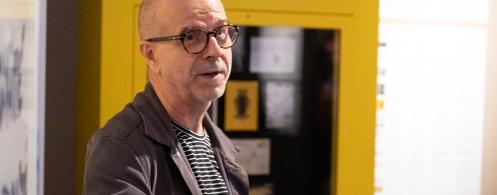
By Iosif Király, visual artist, architect, and educator, Bucharest, Romania
Mail Art is regarded by its proponents as the most democratic art form as it is based — as some of them say - upon the most democratic institution: the postal service. Starting from a simple axiom that whoever has access to the postal service can become a mail artist, all actions initiated within the network follow certain unbreakable rules: no censorship, all submitted works are exhibited and sent works are not to be returned. However, every participant would receive one publication or a list of all the people involved (names and addresses) from where they could select new collaborators or catch the attention of others who would wish to contact them for future projects. Also, mail artworks or archives are not made for commercial use.
While in the contemporary art world an art object needs to be validated by critics, curators, gallerists, and collectors before passing the test of time, in the mail art world the art object receives validation only by postal service workers. It is a Duchampian challenge that’s been ‘thrown’ to the world by Fluxus artist Ray Johnson and his New York Correspondence School.
The network started to crystallize as early as the 1960s and reached its peak in the 1980s. It was also around that time when a few Romanian artists, mostly belonging to my generation, started their practice within it. The mail art ‘mindset’ was focused towards communication, free exchange of artistic ideas, trespassing cultural borders, freedom, and questioning social taboos. In short, everything that the Communist regime in Romania (and totalitarian regimes in general) feared most.
It was due to this factor that the activity of participants in the mail art network came under surveillance and censorship. Towards the end of the 1980s, it was almost already stifled. I was never sure if my messages would arrive at their destination or if all messages sent to me would actually reach me.
Today when I think of the 80s, I do not do it with pleasure, but the mail art adventure is a landmark that seems more and more solid to me and to which, although it is moving away in time, I feel it closer and closer.
Letter image credit: Mail-art by Radu Igaszag, (b. 1953), Romania

